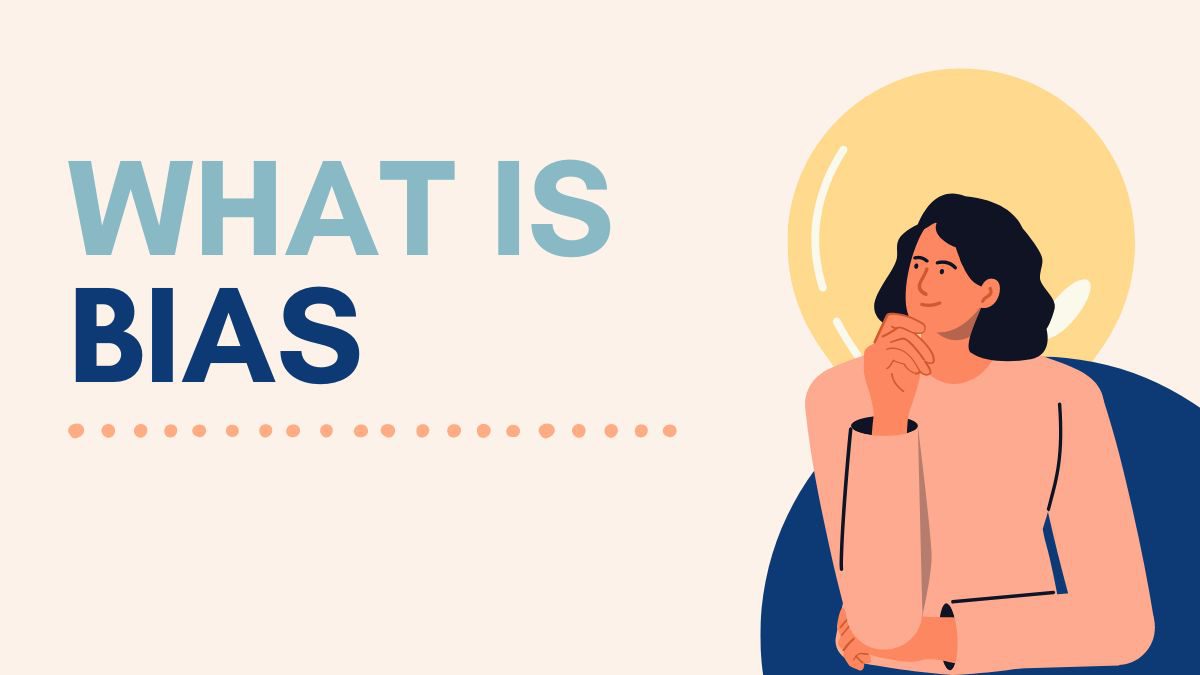Table of Contents
Bias is inherent in man’s way of thinking, influenced by their past experiences, upbringing and the society in which they live. Just as bias helps to make quick decisions, often, it leads to decisions that are not rational and do not consider other factors. In this article, we’ll explore what is bias, the different types of bias, and how biases impact our decisions, particularly in professional environments like finance.
What is Bias?
At its core, bias refers to a prejudice or inclination towards or against something, someone, or a group, often unfairly. In decision-making, bias is the tendency to allow personal preferences or preconceived notions to influence judgement. While biases are a natural part of human thinking, they can become problematic, especially when they lead to decisions that aren’t based on facts or logical reasoning.
For example, a financial analyst may unknowingly favour certain stocks or industries due to biases, even when the data suggests otherwise. These tendencies can skew analyses, affect predictions, and ultimately result in poor financial decisions.
Types of Bias
Bias can take many forms, and each form influences the decision-making process in its special way. Here are a few of the most common biases that affect individuals in both personal and professional contexts:
Confirmation Bias
This is the tendency to positively incline information that supports existing theories, strategies, assumptions or hypotheses. For example, if a financial analyst hypothesises that a particular stock will perform well, the individual will analyse data supporting the hypothesis while downloading data that could refute the hypothesis.
Anchoring Bias
Anchoring is where people fixate on the first piece of information they gain (“the anchor”) while making decisions. For instance, if investors know that a particular share is at a certain price, they will likely have an anchored judgement despite new information indicating that the stock has been overpriced.
Hindsight Bias
This is the practice of presuming that events are inevitable once they have happened. In finance, this could be the case that after some events, such as a market downturn, an analyst would look to conclude that they “knew it was all along” or they could not have been in a position to foresee the crash in the real sense.
Overconfidence Bias
Overconfidence is when people put too much trust in themselves and the information acquired. A financial analyst may feel that they know the market more than the case, thus exposing the business to much risk.
Recency Bias
This entails managing information by associating higher relevancy with recent details instead of taking a historical view. This is seen in investment, where a financial professional could elevate the latest earnings report close to perfection, disregarding the overall performance of the firm in question.
Now, let’s look at how these biases impact decision-making.
The Impact of Bias on Decision Making
Biases can influence big and small decisions, especially within areas that require numerical analysis, like the financial sector. The decision bias may result in a poor decision that may be expensive, cause the loss of an opportunity, and sometimes have ethical implications.
For instance, an analyst who experiences confirmation bias when assessing by tending to stick to a prior conclusion will recommend that certain products that a company invests in will flop. Likewise, anchoring bias could lead investors to pay more for a given stock because it anchors on a previous price.
Many of these biases are latent, meaning their influence is not easily recognisable, complicating control and eradication. This is why anyone working in any field, including finance, needs to be informed about biases and fight them in any way possible.
How to Mitigate Bias in Decision Making?
Recognising and addressing bias is key to becoming a more effective decision-maker. Here are a few strategies to reduce the impact of bias on decisions:
- Increase Awareness
The first step is to become aware of your own biases. By understanding the types of biases, you can start to recognise them in your thought processes. - Seek Diverse Perspectives
Consulting with others who have different views or experiences can help mitigate biases. This might involve discussing investment strategies with colleagues with varying market outlooks in finance. - Use Data-driven Approaches
By relying on data and evidence rather than instinct or intuition, you can reduce the influence of bias on decision-making. For financial analysts, this might mean using sophisticated modelling techniques to ensure decisions are based on factual information. - Regularly Review Decisions
Reflecting on past decisions and understanding where biases may have influenced your choices can help improve future decision-making.
Conclusion
Bias, a natural part of human cognition, can significantly impact decision-making, especially in professional fields like finance. Individuals can make more rational and informed choices by recognising and addressing decision bias. Whether you’re a financial analyst or making personal decisions, awareness of these biases is the first step to improving judgement.
If you’re interested in furthering your financial career and learning how to make more informed, unbiased decisions, Financial Analysis Prodegree by Imarticus Learning can provide you with the necessary tools and skills. This comprehensive programme delves into financial analysis and equips professionals with the analytical and decision-making skills required to succeed in today’s complex financial environment.

